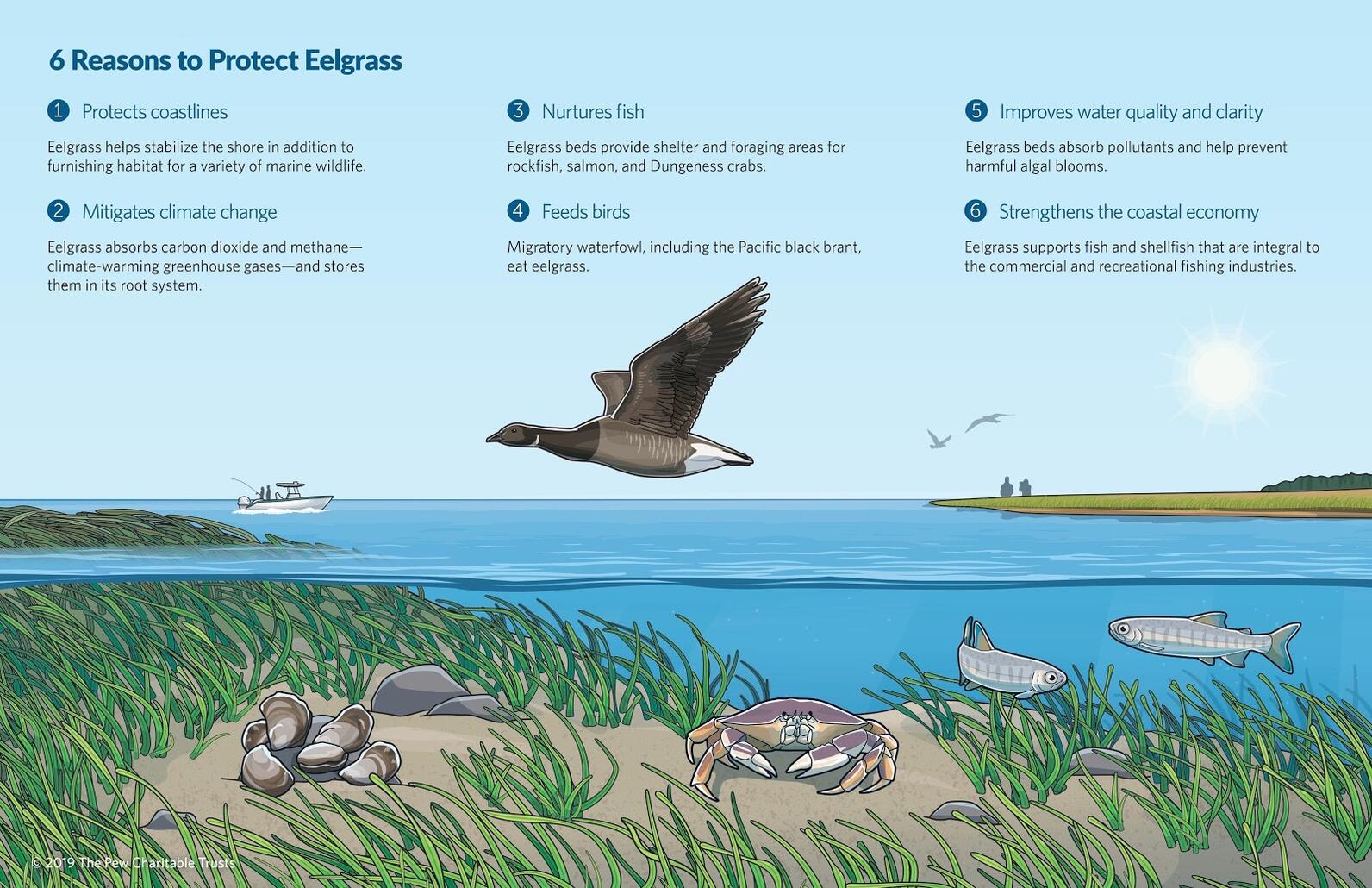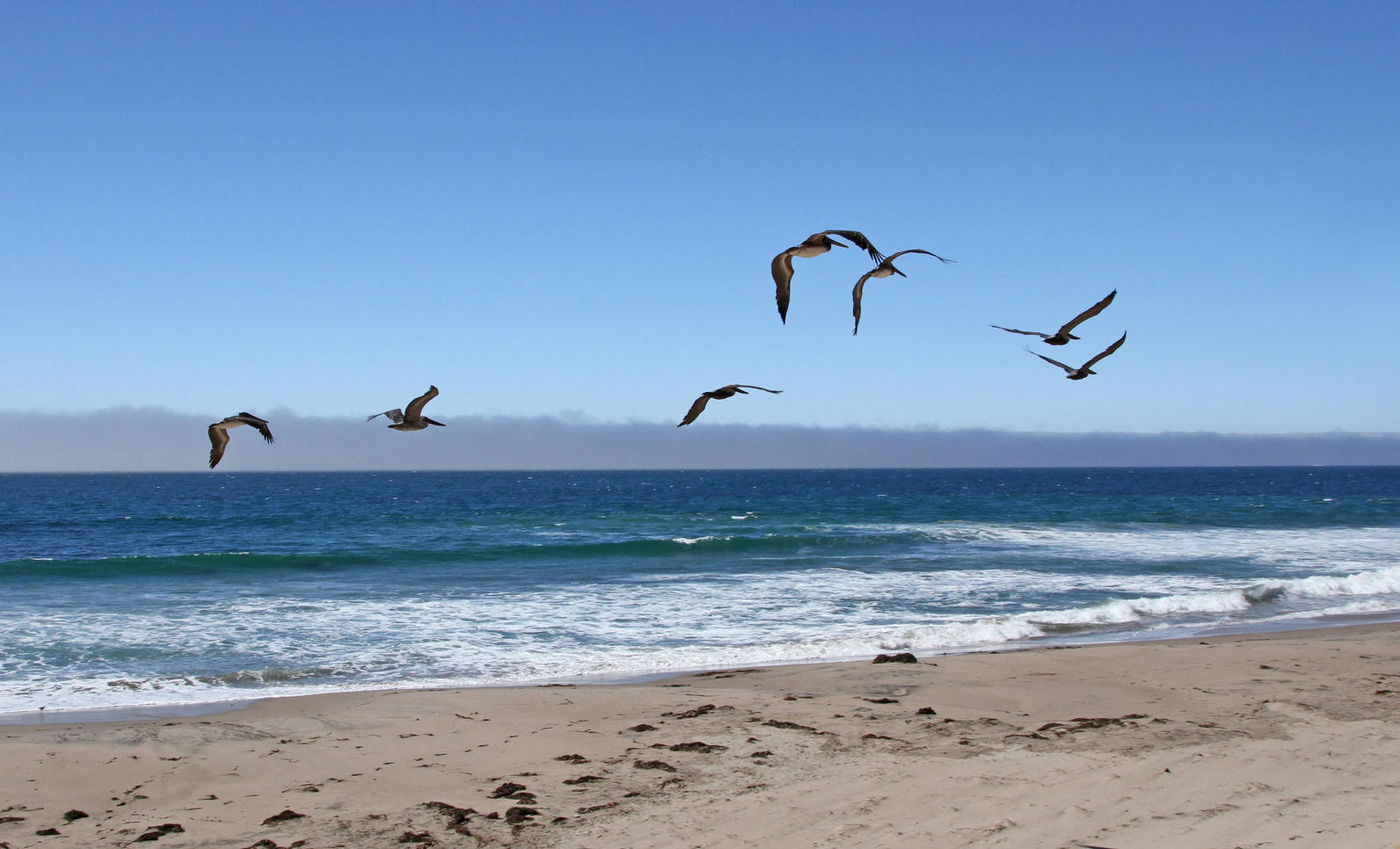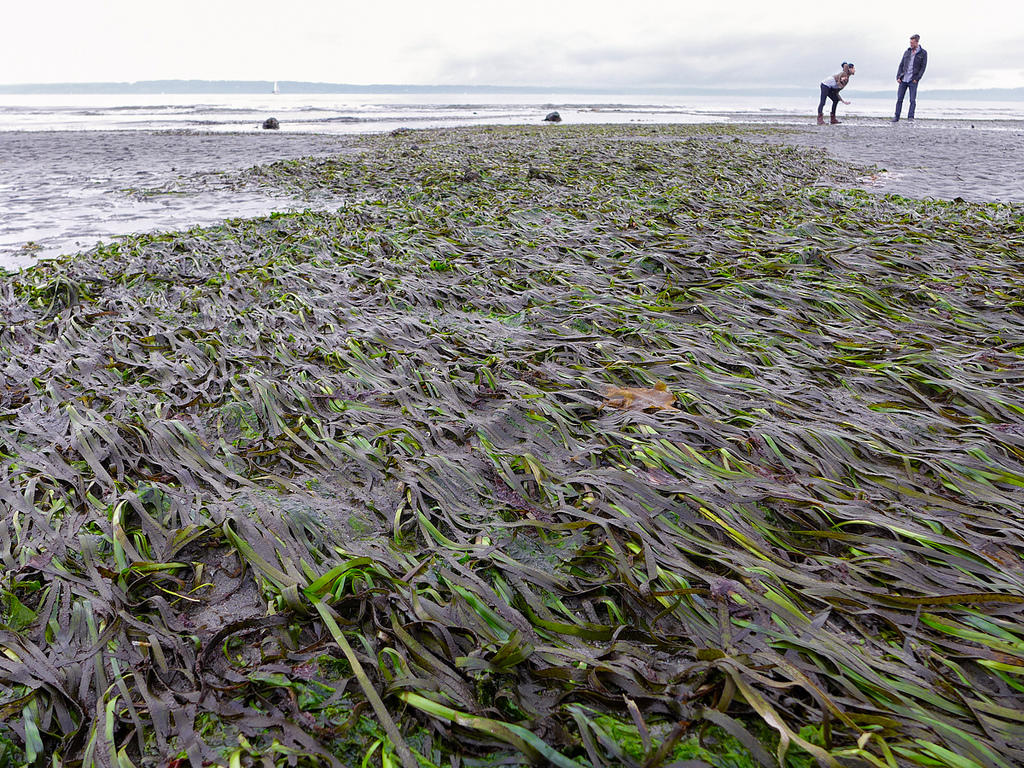Lesser Scaup
Latin: Aythya affinis
An important food source for waterbirds.
Eelgrass Photo: Eric Heupel
No matter where you live, chances are you and your family are benefiting from eelgrass. This beautiful plant provides dozens of ecosystem services and provides essential habitat for coastal birds.
Eelgrass on the U.S. West Coast is a member of the family of sea grasses called Zosteraceae and belongs to the higher taxonomic group of flowering plants called angisosperms. The blades of eelgrass are similar to those found in common grass species and depending on the zone, these could grow up to 4 feet in length.
As a crucial nursery habitat for crabs, salmon, and other wildlife, eelgrass boosts the economies of our coastal communities through fisheries and tourism. Healthy eelgrass beds also clean and filter water, absorb climate-warming carbon, and act as natural buffers to protect the coastline during storms.
Within San Francisco Estuary, Richardson Bay stands out as a particularly unique location for eelgrass restoration. It harbors the second-largest extant eelgrass bed in the estuary, and plants with the most genetic diversity of six beds sampled. Further, a model of environmental conditions in the estuary has identified Richardson Bay as the area with the greatest area suitable for restoration (Merkel and Associates 2004). Hence, Richardson Bay is highly valued both for its existing eelgrass resources and its potential for restoration.
Read All About Eelgrass in this downloadable fact sheet in English and Spanish.

What is eelgrass?
What animals rely on eelgrass?
Why should you care about eelgrass?
Audubon is advancing nature-based strategies to help coastline communities weather the impacts of climate change.
The Richardson Bay Audubon Center & Sanctuary is a remarkable slice of nature on the shores of the San Francisco Bay.
San Francisco Bay is an ecologically rich estuary, significant for its large eelgrass beds, spawning areas for Pacific herring, and tens of thousands of wintering waterbirds and other wildlife. Each winter, waterbirds migrate to the waters in and around the Richardson Bay Wildlife Sanctuary to rest in the calm waters and feast on herring.
Audubon California is committed to protecting the birds and habitat of the San Francisco Bay.
Restoring the vital native plant requires hard work and cold water.

Yesterday produced a victory in our fiight for a transparent and fair California Coastal Commission. Assembly Bill 2002 was voted through the assembly late last night. AB 2002 was introduced by Assemblymembers Toni Atkins, Mark Stone and Marc Levine in reaction to the fiing of former Executive Director Charles Lester and it requires any agent that lobbies the Commission to register as a lobbyist with the Fair Political Practices Commission. The bill also requires that in the seven days prior to a public hearing on a specific matter, a Commissioner must report any ex parte communication within 24 hours, and no ex parte communications may occur in the 24 hours immediately preceding a public hearing.
Our Associate Director of Public Policy, Juan Altamirano, was present at the now infamous Commission meeting where Lester was ousted and he was also there last night when the final tallies were made in support of AB 2002. He and other advocates worked until 9:30 pm to get the necessary 2/3 votes. Assemblymember Stone was especially appreciative of Audubon member emails to their electeds. Stay tuned for more on this effort, we will send action alerts when it comes up for vote again.

Senate Bill 1363, a bill we are sponsoring, made it through the California State Senate floor today with a vote of 26 - 11. This is great news for birds like Pacific Brant and other waterbirds that depend on a vibrant eelgrass ecosystem.
The Los Angeles Times' Steve Lopez is really enjoying this whole controversy with the California Coastal Commission. Today, he wonders aloud whether Gov. Brown has noticed anything fishy with his appointed body:
"For months, I’ve been hearing the same question over and over from readers following the ongoing festival of the absurd at the California Coastal Commission. Where in the name of the father, son and holy coast is Gov. Jerry Brown, and why doesn’t he say or do something?
Good question.
Brown’s Coastal Commission is thrashing about, and lawmakers have rushed to the rescue with several reform bills.
But the governor is quieter than a California field mouse."
For its part, Audubon California continues to support a number of bills aimed at reforming the Coastal Commission. Among these are Assembly Bill 2002, which requires lobbyists to adhere to the same regulations as they would when lobbying other public entities; Senate Bill 1190, which would ban all ex parte communication between commissioners and people with business before the Commission; and Assembly Bill 2616, which would add three new seats to the Commission representing communities disproportionately suffering from pollution and other issues of environmental justice.
Our newsletter is fun way to get our latest stories and important conservation updates from across the state.
Help secure the future for birds at risk from climate change, habitat loss and other threats. Your support will power our science, education, advocacy and on-the-ground conservation efforts.
California is a global biodiversity hotspots, with one of the greatest concentrations of living species on Earth.